ENORMOUS opportunity in South Africa’s renewable energy sector is combined with a "massive pricing war" as experienced international groups facing slowdown in their traditional markets, particularly Europe, try to sell their wares in South Africa, says Sustainable Energy Society of Southern Africa chairman James Shirley.
This is squeezing small players out of a lucrative market
"There is a lot of opportunity in South Africa, as much, if not more, than in any other country, and we have first world requirements," says Mr Shirley.
He says international players’ ability to undercut small-and medium-sized enterprises (SMEs) in South Africa is one of several hurdles facing SMEs.
Also, small companies find it hard to beat Eskom’s tariffs.
"Small companies can’t sell at an Eskom rate because of economies of scale … but the question is not the cost of energy, but the cost of not having it," he said.
South Africa has been on tight energy supply since before the 2008 rolling blackouts that cost the economy an estimated R50bn. These came after a decade during which state-owned power utility Eskom’s pleas for investment in generation capacity were ignored.
Eskom has begun a R300bn build programme, with about 20,000MW of additional capacity due to be online by 2025. But the massive Kusile and Medupi coal-fired power stations — each set to produce approximately 4,800MW — have been delayed by technical and labour trouble.
Meanwhile, the Integrated Resource Plan (IRP), approved in 2010, has boosted investment prospects in South Africa’s renewable energy sector, says the Department of Trade and Industry’s renewable energy industries director, Ntombifuthi Ntuli.
The plan seeks 17.8GW of renewables by 2030.
But Ms Ntuli says the capital and transaction costs of energy project development are "too high and with the tariffs going down it becomes more and more difficult for small South African players to participate independently".
Red Cap CEO Mark Tanton says that the bid process is often prohibitively expensive for SMEs, at between R20m and R30m per bid.
While renewable energy is still more expensive, per kilowatt hour (kWh), than Eskom’s 65c/kWh, tariffs have dropped 68% for solar photovoltaics to 88c/kWh, and for wind 42% to 74c/kWh.
Mr Tanton points out Eskom’s tariffs will rise (to 89c/kWh by 2018) while the rates for renewable are fixed.
Despite these and a few other hiccups, growth in the South African renewable energy industry has been impressive, showing what political will and policy certainty can do.
Mr Shirley points out there is a distinct role for SMEs in South Africa’s renewable energy market — the domestic and small industrial sector.
This sector is best-served by SMEs because the projects are simply too small and fiddly for large corporations.
The National Development Plan, along with several economists, argues that small business is critical to South Africa’s economic growth. This blueprint for South Africa’s socioeconomic success, promises the reduction of red tape and other obstacles to small business.
Much of that has not yet been forthcoming.
For one, the Municipal Finance Management Act does not allow municipalities to sign contracts of more than three years with private enterprise, which means the millions that often have to be spent on a small plant are not recoverable in that time.
Also, small businesses are battling after the Eskom rebate programme for low-pressure solar thermal systems came to an end in May.
Eskom senior GM for integrated demand management Andrew Etzinger said the power utility wanted to extend the rebate programme, but the National Energy Regulator of South Africa (Nersa) had approved an 8% electricity tariff increase instead of the 16% for which the power utility had applied.
Eskom had applied to the government for additional funding.
But the biggest hurdles for SMEs are a lack of requisite education and skills, says Mr Shirley.
"There’s a massive push to have all these projects done and installed, but who’s going to do it properly? There’s a skills drain and we have lost engineers and technicians. That’s a big barrier to entry for SMEs," he says.
The UN-backed Renewables 2013 Global Status Report shows that South Africa increased its investment in renewable energy last year from a few hundred million dollars to $5.7bn.
About 12.3-million citizens still do not have access to power.
Just last week another 17 clean-energy projects worth R33bn were approved, potentially adding 1,471.5MW to the national grid, the government announced at the close of the independent power producers programme’s third bid "window". The first two rounds of the programme resulted in committed investment of R74bn.
The push towards renewable energy resources is in part about diversifying South Africa’s coal-dependent energy grid, in part about meeting South Africa’s 2009 promise to the international community to reduce greenhouse gas emissions by 34% below "business as usual" levels by 2020 and 42% by 2025, Department of Energy director-general Nelisiwe Magubane says.
The push is also in line with the National Development Plan’s proposal to use "greening the economy" to boost economic growth.
Another critical reason for moving away from coal is that much of South Africa’s unmined coal reserve lies in the Ekangala grasslands where lie the headwaters of three of South Africa’s most important rivers — the Tugela, the Vaal and the Pongola.
Water is a resource without which life cannot exist. It is also crucial for industry.
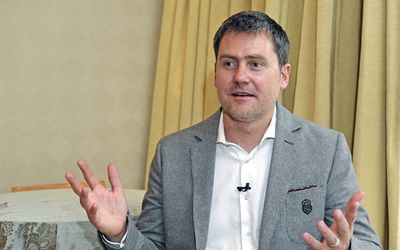
Red Cap Investments MD Mark Tanton at the Business Day Dialogue in Johannesburg last week. Picture: RUSSELL ROBERTS
ENORMOUS opportunity in South Africa’s renewable energy sector is combined with a "massive pricing war" as experienced international groups facing slowdown in their traditional markets, particularly Europe, try to sell their wares in South Africa, says Sustainable Energy Society of Southern Africa chairman James Shirley.
This is squeezing small players out of a lucrative market
"There is a lot of opportunity in South Africa, as much, if not more, than in any other country, and we have first world requirements," says Mr Shirley.
He says international players’ ability to undercut small-and medium-sized enterprises (SMEs) in South Africa is one of several hurdles facing SMEs.
Also, small companies find it hard to beat Eskom’s tariffs.
"Small companies can’t sell at an Eskom rate because of economies of scale … but the question is not the cost of energy, but the cost of not having it," he said.
South Africa has been on tight energy supply since before the 2008 rolling blackouts that cost the economy an estimated R50bn. These came after a decade during which state-owned power utility Eskom’s pleas for investment in generation capacity were ignored.
Eskom has begun a R300bn build programme, with about 20,000MW of additional capacity due to be online by 2025. But the massive Kusile and Medupi coal-fired power stations — each set to produce approximately 4,800MW — have been delayed by technical and labour trouble.
Meanwhile, the Integrated Resource Plan (IRP), approved in 2010, has boosted investment prospects in South Africa’s renewable energy sector, says the Department of Trade and Industry’s renewable energy industries director, Ntombifuthi Ntuli.
The plan seeks 17.8GW of renewables by 2030.
But Ms Ntuli says the capital and transaction costs of energy project development are "too high and with the tariffs going down it becomes more and more difficult for small South African players to participate independently".
Red Cap CEO Mark Tanton says that the bid process is often prohibitively expensive for SMEs, at between R20m and R30m per bid.
While renewable energy is still more expensive, per kilowatt hour (kWh), than Eskom’s 65c/kWh, tariffs have dropped 68% for solar photovoltaics to 88c/kWh, and for wind 42% to 74c/kWh.
Mr Tanton points out Eskom’s tariffs will rise (to 89c/kWh by 2018) while the rates for renewable are fixed.
Despite these and a few other hiccups, growth in the South African renewable energy industry has been impressive, showing what political will and policy certainty can do.
Mr Shirley points out there is a distinct role for SMEs in South Africa’s renewable energy market — the domestic and small industrial sector.
This sector is best-served by SMEs because the projects are simply too small and fiddly for large corporations.
The National Development Plan, along with several economists, argues that small business is critical to South Africa’s economic growth. This blueprint for South Africa’s socioeconomic success, promises the reduction of red tape and other obstacles to small business.
Much of that has not yet been forthcoming.
For one, the Municipal Finance Management Act does not allow municipalities to sign contracts of more than three years with private enterprise, which means the millions that often have to be spent on a small plant are not recoverable in that time.
Also, small businesses are battling after the Eskom rebate programme for low-pressure solar thermal systems came to an end in May.
Eskom senior GM for integrated demand management Andrew Etzinger said the power utility wanted to extend the rebate programme, but the National Energy Regulator of South Africa (Nersa) had approved an 8% electricity tariff increase instead of the 16% for which the power utility had applied.
Eskom had applied to the government for additional funding.
But the biggest hurdles for SMEs are a lack of requisite education and skills, says Mr Shirley.
"There’s a massive push to have all these projects done and installed, but who’s going to do it properly? There’s a skills drain and we have lost engineers and technicians. That’s a big barrier to entry for SMEs," he says.
The UN-backed Renewables 2013 Global Status Report shows that South Africa increased its investment in renewable energy last year from a few hundred million dollars to $5.7bn.
About 12.3-million citizens still do not have access to power.
Just last week another 17 clean-energy projects worth R33bn were approved, potentially adding 1,471.5MW to the national grid, the government announced at the close of the independent power producers programme’s third bid "window". The first two rounds of the programme resulted in committed investment of R74bn.
The push towards renewable energy resources is in part about diversifying South Africa’s coal-dependent energy grid, in part about meeting South Africa’s 2009 promise to the international community to reduce greenhouse gas emissions by 34% below "business as usual" levels by 2020 and 42% by 2025, Department of Energy director-general Nelisiwe Magubane says.
The push is also in line with the National Development Plan’s proposal to use "greening the economy" to boost economic growth.
Another critical reason for moving away from coal is that much of South Africa’s unmined coal reserve lies in the Ekangala grasslands where lie the headwaters of three of South Africa’s most important rivers — the Tugela, the Vaal and the Pongola.
Water is a resource without which life cannot exist. It is also crucial for industry.


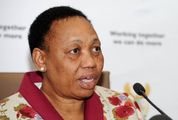
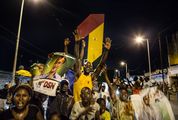




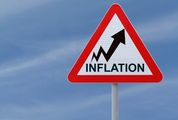
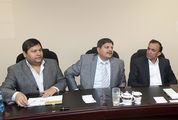




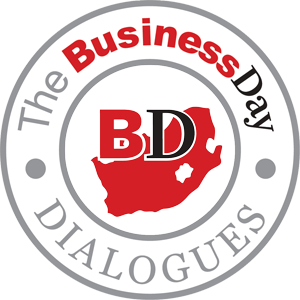 Read more about the Business Day Dialogue on renewable energy, presented with Nedbank Capital
Read more about the Business Day Dialogue on renewable energy, presented with Nedbank Capital


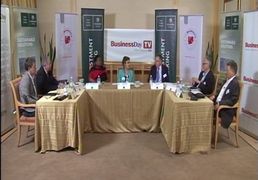
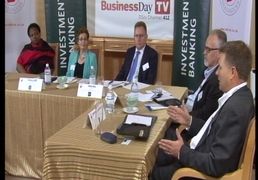
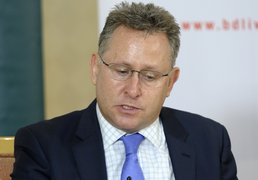
 Register for our
Register for our 



Change: -0.47%
Change: -0.57%
Change: -1.76%
Change: -0.34%
Change: 0.02%
Data supplied by Profile Data
Change: -1.49%
Change: 0.08%
Change: -0.47%
Change: 0.00%
Change: -0.04%
Data supplied by Profile Data
Change: -0.34%
Change: 0.03%
Change: -0.10%
Change: -0.22%
Change: -0.81%
Data supplied by Profile Data
Change: -0.28%
Change: -1.15%
Change: -0.07%
Change: -1.21%
Change: -0.22%
Data supplied by Profile Data